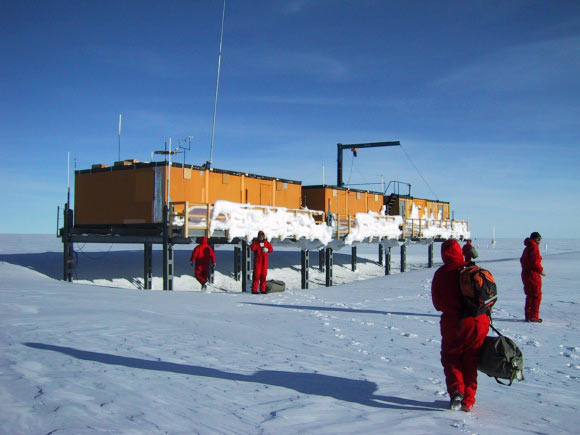A team of researchers from Germany, Austria and Australia has found traces of the radioactive isotope iron-60 — the tell-tale signature of a supernova explosion — within fresh snow in Antarctica.
Source: Sci News
Iron-60 (60Fe) is a radioactive isotope of iron. It is produced from pre-existing stable iron isotopes by a process called ‘neutron capture’ in the layers of massive stars where helium and carbon atoms are undergoing fusion.
This isotope is only expelled into space when the massive star explodes at the end of its life. It then decays with a half-life of 2.6 million years.
Twenty years ago, scientists found iron-60 in sediment and crust samples taken from the Pacific, Atlantic and Indian Oceans.
More recently, they detected the rare isotope in lunar samples gathered by the Apollo 12, 15 and 16 missions.
“We wondered where we might possibly find further iron-60 deposits from stellar explosions in the past as the Solar System is just passing through a denser interstellar environment,” said lead author Dr. Dominik Koll of the Australian National University and colleagues.
“This was a difficult undertaking since the fine dust from the cosmos is usually lost in nature.”
“We believed, however, that it might be possible to detect the dust in the pure snow of the Antarctic. So we got our spades out and shoveled snow.”

Using accelerator mass spectrometry, the researchers analyzed 500 kg of snow from the Kohnen Station, a container settlement in Antarctica.
After extensive analyses, they found at least five atoms of iron-60 in their samples.
“We were able to rule out that these atoms had occurred during nuclear weapons tests or as a result of the reactor accident in Fukushima, for instance,” they said.
“The radioactive isotopes must originate from far-distant stellar explosions.”
“However, this iron-60 did not shower down on the Earth millions of years ago, as the snow collected was no more than 20 years old,” they added.
“It does not seem to have come from far-distant supernovae, because otherwise the iron-60 dust would have been too greatly depleted in the Universe.”

Dr. Koll and co-authors suspect that the Antarctic iron-60 came from one of interstellar dust clouds in the solar neighborhood.
“The closest one to Earth is known as the Local Interstellar Cloud, which could have been created by supernovae,” they said.
“Our Solar System entered this cloud, which is also known as the Local Fluff, about 40,000 years ago, and will leave it again in a few thousand years,” said Dr. Gunther Korschinek, a researcher at the Technische Universität München and the Excellence Cluster Universe.
“Following on from this hypothesis, material from ice cores that are older than 40,000 years should not contain any interstellar iron-60,” Dr. Koll added.
“It would be ideal, of course, if we could find evidence of the transition of the Solar System into this cloud.”
The findings were published online in the journal Physical Review Letters.

































Leave a Comment
You must be logged in to post a comment.